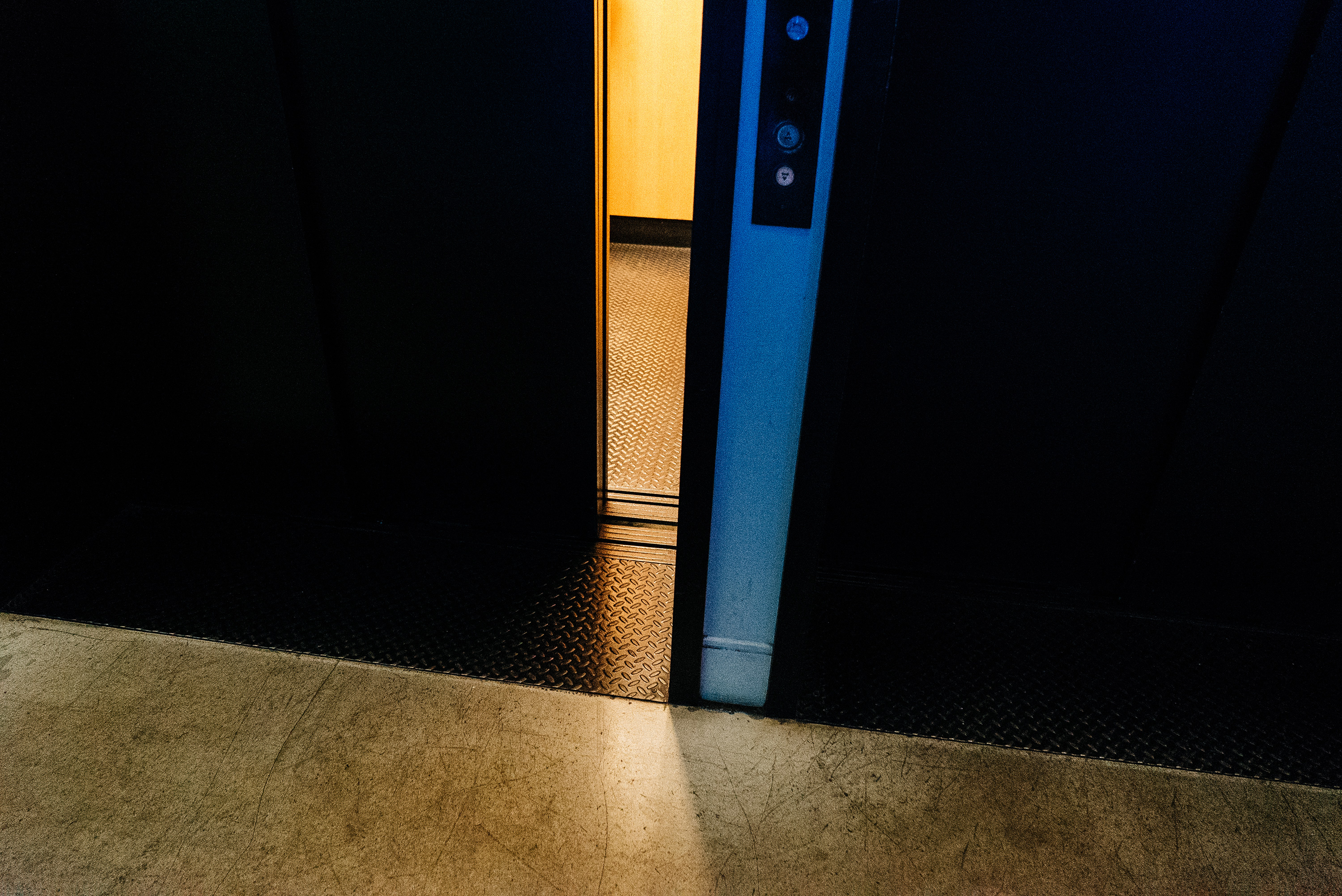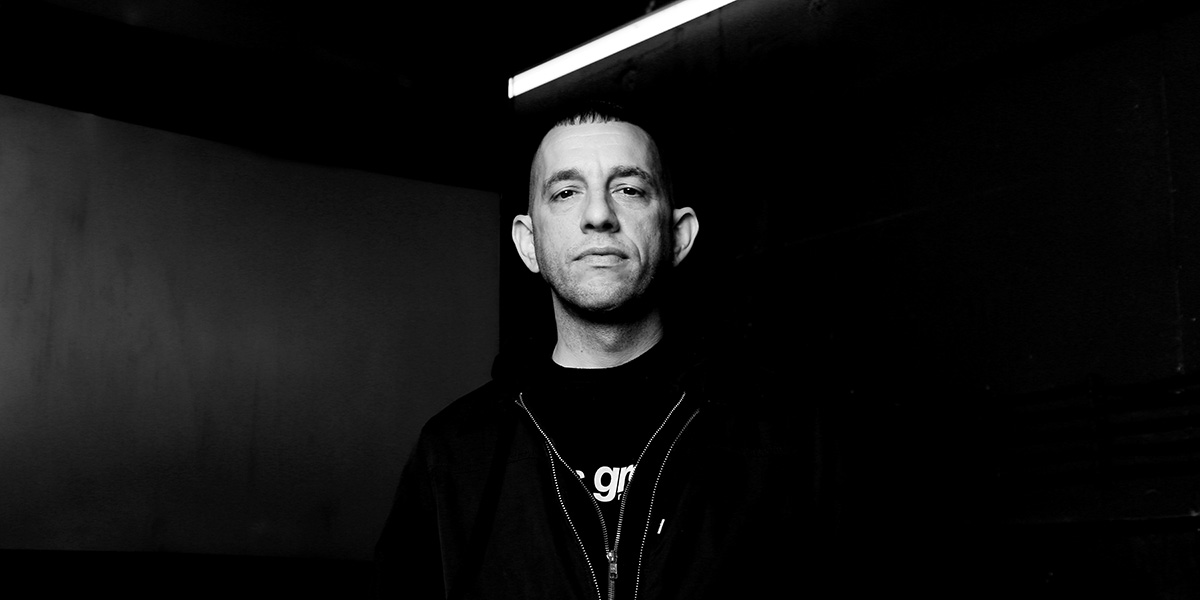On Their New Album, Orphx Walk the Line Between Industrial and Techno
The experimental Canadian duo speaks with Shawn Reynaldo about their latest LP, Pitch Black Mirror

Orphx, an industrial techno duo from Ontario, Canada, have been active since the early ’90s, drawing on the sonics and politics of industrial and club-focused electronics to create a simmering sense of controlled chaos. Having just released their latest album, Pitch Black Mirror, Rich Oddie and Christina Sealey speak to Shawn Reynaldo for RBMA Radio’s First Floor, sharing details of the album’s genesis and describing how they maintain a balance between the worlds of techno and industrial.
Listen to First Floor on RBMA Radio here every Thursday at 1PM EDT.
Your last album, Radiotherapy, came out in 2011, and around that time there was a lot of talk about this “new trend” of techno producers flirting with industrial music. Five years later, that trend has become one of the dominant aesthetics in techno. How do you guys feel about this development, given that you’ve been exploring this musical territory since the ’90s?
Rich Oddie
It’s been good timing for us insofar as we first started working with Adam X and the Sonic Groove label in 2009 – the point where I think this trend was beginning. Prior to that, we’d been releasing with labels like HANDS and Ant Zen, which were associated with the rhythmic noise scene in Europe. That was a very cool scene to be involved with, but it didn’t reach the techno world that we were also interested in. That sound, as associated with that rhythmic noise scene, was very much talking about techno, drum & bass and other styles.
Christina Sealey
Noise.
Rich Oddie
And merging that with the industrial influence. Like you said, we’ve been doing that since the mid-’90s. That connection with Adam allowed us to reach other people and a different scene. By chance, as we started to work with him, there was this shift within techno back towards industrial influences, but it’s taken us by surprise over the last few years that it’s become so dominant [again] within techno. We’re still trying to get our heads around that.
Has the rise of industrial techno, at least in terms of popularity, affected your musical vision at all?
Christina Sealey
I don’t think we’ve changed how we work on our music. I think we’ve naturally been shifting our sound according to what we’ve become interested in, and where our ideas are. I don’t think that’s affected our sound, or that we feel like we need to do something different. We do what we do and hope that people want to listen to it. We do seem to be getting a larger audience, in part, because of this resurgence.
Rich Oddie
I don’t think you can bracket it out, though. I think it’s been on our minds, working on this record. We’ve had discussions where it’s like, “Wow, this is really becoming almost saturated, this kind of sound.” There’s a quality to some of that where I find that it’s power and noise for its own sake, and that’s never been our approach. We’ve been more interested in the hypnotic aspects of this music and the ideas associated with it – going right back to the first wave of industrial music in the ’70s, which had a political, critical aspect to it.
Making this record, there was a conscious attempt by us to draw in all the influences that we’ve had over the years and make something quite diverse. There might be a couple of tracks that are very much in the style of industrial techno, or rhythmic noise, but there is a real diversity of sound.
Is there any unifying theme or concept to this album?
Christina Sealey
Yeah, we did have an underlying idea for the album that started with a poem that we read. Rich, how would you describe it? It’s a transformation, I think.
Rich Oddie
Yeah, there’s a lot of water imagery in this poem. I think Christie had it tacked to her wall, and I saw it. I was like, “This is really cool.” It talks about diving into negative emotions or experiences rather than running from them, and the transformative power of doing that. It says that in a much more poetic way than I just did. One of the last lines in the poem says something like, or refers to something like, “a pitch black mirror of unknowing.” I liked that line. We ended up using that as a working title that stuck.
There’s no relation to the TV show Black Mirror?
Rich Oddie
No, there is not. It’s funny. There are new episodes out now, so that was kind of funny timing. I certainly do like that TV show, but it wasn’t a conscious attempt to refer to it, no.
Christina Sealey
I don’t watch TV, so I didn’t even know about it until just the other day when Rich was like, “Hey, have you heard of this show?”
Listening to the album, there seems to be an increased vocal presence this time around. What prompted that?
Christina Sealey
That’s something we’ve wanted to do for a while, actually, but we hadn’t found the right way to do it [until now]. This album has allowed us to open things up a bit. Also, the idea of collaborating with Marie Davidson was something that we’d wanted to do.
Rich Oddie
It came naturally [to us] over the last year or so that we both wanted to explore using more vocals, both spoken and sung. We used samples in the past, and vocals here and there, but like you said, it’s more prominent on this record than ever before. I’ve been doing vocals in the live performances recently, too, so we’re trying to make it more of a strong element.
Christina Sealey
Actually, it’s something that we’ve been talking about since probably 2009.
Rich Oddie
Yeah – for quite a while.
Christina Sealey
Yeah – and even then, we just didn’t have the right way to do it yet.
You guys are based in Hamilton, Ontario. I know Junior Boys and Jessy Lanza are from there, and it seems like more electronic artists are making their home in Hamilton these days. Is this a coincidence, or is there some kind of electronic hub developing there?
Rich Oddie
There’s been electronic music produced here for as long as I can remember, but I don’t know that it’s ever cohered into what I would call an “electronic music scene.” There are sporadic noise shows that have been going on, with different people presenting those (including ourselves), and there have been techno parties in the ’90s. Once in a while, something like that will spring up in the city. There’s a tradition of electronic music of different shades, with a lot of bedroom producers. I would say that there’s always been interesting electronic music produced there, but it’s never formed into one solid scene.
Christina Sealey
Jessy and Jeremy are good friends of ours! I think part of the reason why they – and myself – like Hamilton is that it’s a nice place to hide. You can focus on recording rather than getting distracted by a bunch of other stuff. In terms of our electronic music, or the industrial music that we are making, some of the sounds come out of the grittiness of the city, too.

